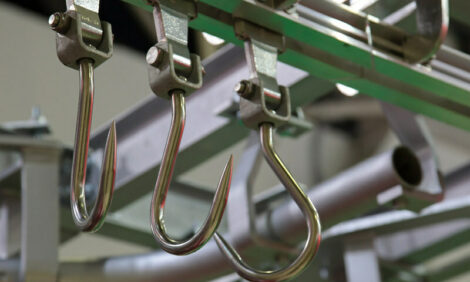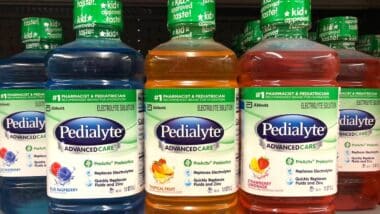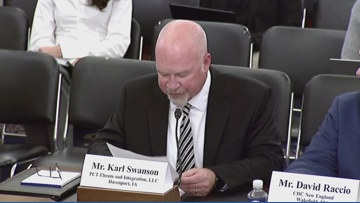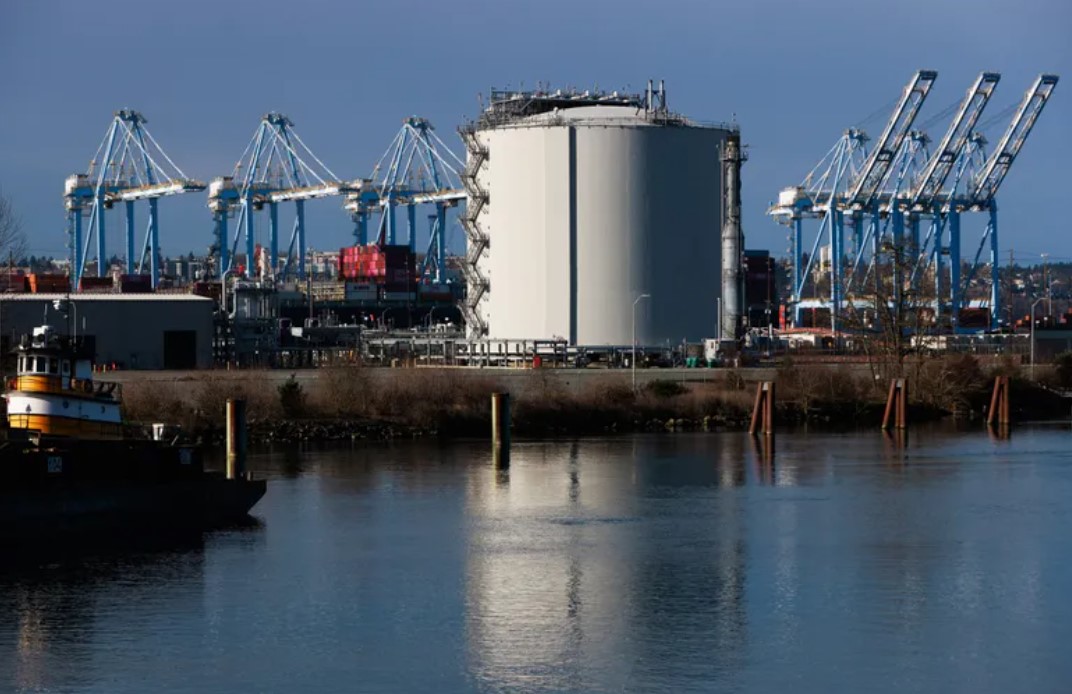Report on Child Labor Violations at Mar-Jac Poultry AL LLC and Alignment with Sustainable Development Goals
Executive Summary
A U.S. federal court has mandated that Mar-Jac Poultry AL LLC pay $385,000 in civil penalties following an investigation by the U.S. Department of Labor that uncovered severe violations of federal child labor laws. The consent judgment also imposes strict, multi-year oversight to prevent future infractions. These violations represent a significant departure from the principles outlined in the United Nations Sustainable Development Goals (SDGs), particularly those concerning labor rights, health, and institutional justice.
Details of Federal Labor Law Violations
The investigation by the Department of Labor’s Wage and Hour Division identified multiple breaches of the Fair Labor Standards Act (FLSA). The company’s actions directly contravene regulations designed to protect young workers. Key violations included:
- The illegal employment of minors, with some workers as young as 13 years old.
- Assigning minor employees to hazardous occupations explicitly forbidden under federal law, such as operating forklifts, deboning poultry, eviscerating poultry, and working on the kill floor.
- Employing workers aged 14 and 15 in prohibited occupations and outside of legally permitted hours, including overnight shifts.
Implications for Sustainable Development Goals (SDGs)
The actions of Mar-Jac Poultry AL LLC are in direct conflict with several core Sustainable Development Goals, undermining global efforts to ensure ethical labor and responsible corporate conduct.
- SDG 8: Decent Work and Economic Growth: The case is a stark violation of Target 8.7, which calls for the immediate eradication of the worst forms of child labor. Furthermore, by placing young workers in dangerous environments, the company has failed to uphold Target 8.8, which aims to protect labor rights and promote safe and secure working environments for all workers.
- SDG 3: Good Health and Well-being: The employment of children in hazardous industrial settings, such as a poultry processing plant, poses a direct and severe risk to their physical and mental well-being. This practice is contrary to the fundamental objective of ensuring healthy lives for all.
- SDG 12: Responsible Consumption and Production: The use of illegal child labor reveals a failure in establishing sustainable and ethical production patterns within the company’s supply chain, a key focus of SDG 12.
- SDG 16: Peace, Justice, and Strong Institutions: The enforcement action by the Department of Labor and the subsequent federal court judgment exemplify the function of “strong institutions” in upholding the rule of law and ensuring corporate accountability, which is a cornerstone of SDG 16.
Mandated Compliance and Oversight Measures
The consent judgment entered in the U.S. District Court for the Northern District of Alabama requires Mar-Jac Poultry AL LLC to implement a comprehensive set of corrective actions to align its operations with federal law and the principles of decent work (SDG 8). The company is now legally bound to:
- Prohibit the hiring of any worker under the age of 14 and prevent all minors from working in hazardous occupations.
- Implement a system requiring new hires to meet with shift managers in person prior to commencing work.
- Ensure all hazardous equipment is clearly marked with age restrictions.
- Display signage at all facility entrances indicating that workers must be at least 18 years old.
- Maintain comprehensive records for each worker, including date of birth for all employees under 19 years of age.
- Engage a third-party compliance specialist for a three-year period to monitor adherence to federal child labor laws, conduct quarterly training for all management staff, and submit annual compliance reports.
- Update all management training and employee onboarding materials to include detailed information on FLSA compliance.
- Establish and enforce disciplinary sanctions for any management personnel responsible for child labor violations or for retaliating against employees who report suspected violations.
- Grant the Wage and Hour Division warrantless access to its facilities and provide requested documents within 72 hours for a period of three years.
1. Which SDGs are addressed or connected to the issues highlighted in the article?
The article on the poultry processor’s child labor violations directly addresses and connects to two primary Sustainable Development Goals (SDGs):
-
SDG 8: Decent Work and Economic Growth
This goal aims to promote sustained, inclusive, and sustainable economic growth, full and productive employment, and decent work for all. The article’s core subject is the violation of labor laws, specifically the employment of children in hazardous and illegal conditions, which is the antithesis of “decent work.” The legal action taken seeks to enforce labor rights and create a safer working environment, aligning with the objectives of SDG 8.
-
SDG 16: Peace, Justice and Strong Institutions
This goal focuses on promoting peaceful and inclusive societies for sustainable development, providing access to justice for all, and building effective, accountable, and inclusive institutions at all levels. The article details the actions of the U.S. Department of Labor and a federal court, which are key institutions enforcing the rule of law. The investigation, consent judgment, and imposition of penalties and oversight measures demonstrate the functioning of a justice system to hold a company accountable and protect the rights of vulnerable children.
2. What specific targets under those SDGs can be identified based on the article’s content?
Based on the details in the article, several specific targets under SDG 8 and SDG 16 are relevant:
-
Target 8.7: End child labour
This target calls for immediate and effective measures to “eradicate forced labour, end modern slavery and human trafficking and secure the prohibition and elimination of the worst forms of child labour… and by 2025 end child labour in all its forms.” The article directly relates to this target by describing how Mar-Jac Poultry employed minors, “some as young as 13 years old,” and engaged them in “hazardous and forbidden” work, which constitutes one of the “worst forms of child labour.” The legal actions are a direct measure to eliminate these practices.
-
Target 8.8: Protect labour rights and promote safe working environments
This target aims to “protect labour rights and promote safe and secure working environments for all workers.” The article highlights severe lapses in providing a safe environment, as minors were allowed to “operat[e] a forklift, debon[e] and eviscerat[e] poultry, and wor[k] on the kill floor.” The consent judgment, which requires marking hazardous equipment and training managers on compliance, is a direct attempt to enforce this target.
-
Target 16.2: End abuse and exploitation of children
This target is to “end abuse, exploitation, trafficking and all forms of violence against and torture of children.” Employing children in dangerous jobs, especially after a “tragic death of a child” at another company facility, is a clear form of exploitation and abuse. The legal intervention aims to stop this exploitation.
-
Target 16.3: Promote the rule of law and access to justice
This target seeks to “promote the rule of law at the national and international levels and ensure equal access to justice for all.” The article is a case study of this target in action. The U.S. Department of Labor’s investigation and the subsequent “consent judgment… in the U.S. District Court for the Northern District of Alabama” exemplify the application of the rule of law to protect workers’ rights and ensure justice.
3. Are there any indicators mentioned or implied in the article that can be used to measure progress towards the identified targets?
Yes, the article mentions and implies several indicators that can be used to measure progress towards the identified targets:
-
Indicators for Target 8.7 (End child labour)
The article explicitly mentions the age of the child laborers (“some as young as 13 years old,” and workers “between the ages of 14 and 15”). This directly relates to Indicator 8.7.1: Proportion and number of children aged 5–17 years engaged in child labour. The court order requiring the company to “keep a record for each worker detailing… date of birth for all employees under 19 years of age” is a mechanism to track this indicator at the corporate level.
-
Indicators for Target 8.8 (Protect labour rights)
The article implies indicators related to workplace safety and compliance. The consent judgment mandates specific actions that can be tracked, such as:
- The number of managers receiving “quarterly child labor compliance training.”
- The presence of signs at facility entrances and markings on hazardous equipment.
- The submission of “annual reports summarizing actions taken to comply with federal child labor laws” by a third-party specialist.
These serve as practical, measurable indicators of the company’s progress in creating a safer work environment.
-
Indicators for Target 16.2 (End abuse and exploitation of children)
The article points to several indicators of both the problem and the response:
- Number of child labor violations found: The investigation by the Wage and Hour Division identified multiple violations.
- Incidents of injury or death of child workers: The article tragically notes the “death of a child at their Mississippi facility in 2023,” a stark negative indicator.
Reducing these numbers to zero would indicate progress.
-
Indicators for Target 16.3 (Promote the rule of law)
The article provides clear indicators of the justice system’s response:
- Number of legal judgments against violators: The “consent judgment” is a direct measure of legal action.
- Amount of financial penalties imposed: The company was ordered to pay “$385,000 in civil money penalties,” which is a quantifiable indicator of accountability.
4. Table of SDGs, Targets, and Indicators
| SDGs | Targets | Indicators |
|---|---|---|
| SDG 8: Decent Work and Economic Growth | 8.7: Take immediate and effective measures to eradicate forced labour, end modern slavery and human trafficking and secure the prohibition and elimination of the worst forms of child labour… and by 2025 end child labour in all its forms. |
|
| 8.8: Protect labour rights and promote safe and secure working environments for all workers… |
|
|
| SDG 16: Peace, Justice and Strong Institutions | 16.2: End abuse, exploitation, trafficking and all forms of violence against and torture of children. |
|
| 16.3: Promote the rule of law at the national and international levels and ensure equal access to justice for all. |
|
Source: ohsonline.com







